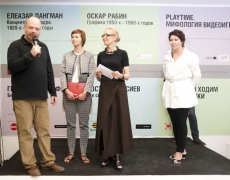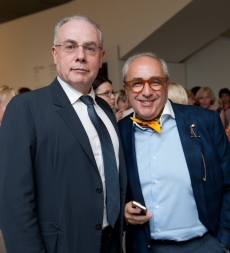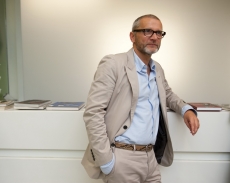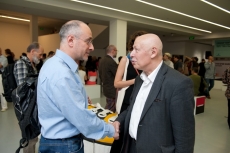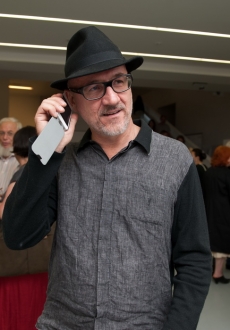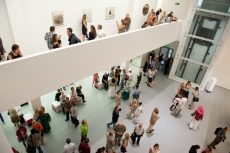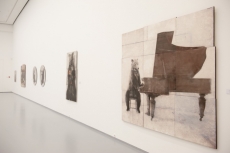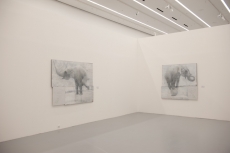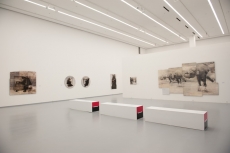Bestiary
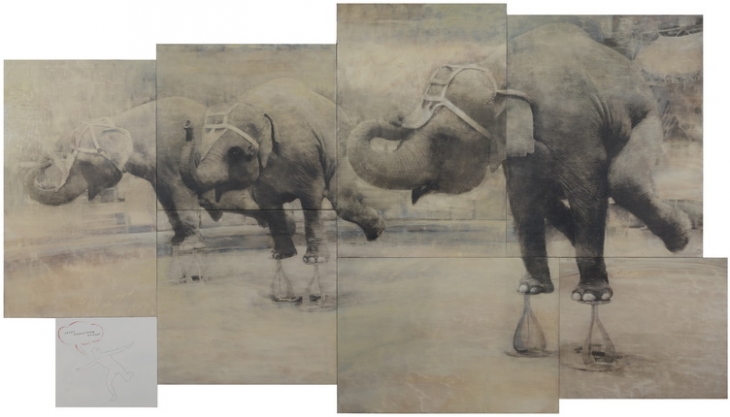
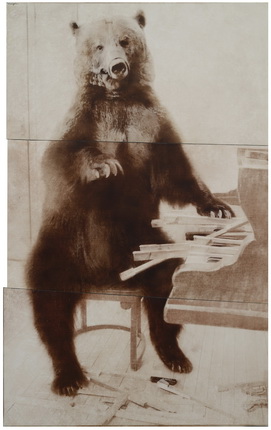
Gregoriy Maiofis. Migrant birds are flying. 2013. Acrylic, bromoil transfer on canvas. Marina Gisich Gallery
Gregoriy Maiofis. 4’33’’. 2013. Bromoil mounted on canvas. Private collection, St. Petersburg
Moscow, 18.07.2013—8.09.2013
exhibition is over
Share with friends
For the press
Multimedia Art Museum, Moscow and Marina Gisich Gallery present the exhibition by Gregoriy Maiofis — «Bestiary».
G. Maiofis studied the classical tradition of drawing and painting in St. Petersburg Academy of Arts, as his father and grandfather. After living in the USA he got into the contemporary philosophy and arts, and this acquaintance has to a great extent determined the most important subjects in his art, such as text and interpretation. Ideas of psychoanalysis, deconstructivism, post-structuralism influenced his intellectual development as an artist. Since the beginning of 2000-s G. Maiofis has appealed to photography, creating the staged compositions where he involves circus animals, ballet dancers, gymnasts, musicians. Since 2004 he has been practicing of alternative processes of photo printing (salt prints, bromoil processes etc.) He is one of the few artists who tries to renew the rare technology of the bromoil process which was out of use already before the World War II and actually exists on the border of photography and painting. He worked with these processes creating the series «Proverbs», «Artist and model»; these series are revealed by the artist till the present moment.
«All works by Gregoriy Maiofis are all-sufficient statements with accomplished visual subject. I think this occurs primarily because he gets carried away with these subjects — he has the talent of story-teller and the excitement of narrating takes him a long way. A role — paradoxically — is also played by the fact that Maiofis is an artist who undoubtedly possesses a sense of humor». (Alexander Borovskiy, head of contemporary art department, the State Russian Museum).
The artist uses all «humor registers» — from absurd to everyday life; he takes the images of animals — bears, elephants, lions, monkeys. The subject and questions of «beastyness» appeal us to a certain type of creating the subject and even the genre forms, such as the fable.
Description of various beasts in prose and lyrics, mainly with allegoric or moralizing aims reminds us the tradition of classical medieval «bestiary», where author as a rule tended to compare the described creatures with the images of religion and morality and decoded them as the hieroglyphs. Following the words of A. Borovsky, for many years Maiofis has been hammering away at one point while creating his «optical stories». This point is «the question of presentation».
The exhibition in Multimedia Art Museum reveals the artist’s appealing to the images of beasts; Maiofis provides his characters with the human features and tries to balance between conventionality and vitality.
The subject of appealing to the forgotten sources of humanitarian culture nowadays becomes quite important; it tends to fill up the extensive, complicated knowledge. The medieval bestiary is among these sources — the collection of zoological articles with the didactic and moral meaning.
There were several exhibitions with the title «Bestiary» just during recent years.
Generally they are quite far from the mediaeval knowledge themes, but use the mystery and fantastic nature of the ancient culture quite readily. In case of the new project by Gregory Maiofis the title and the theme of «Bestiary» correspond to each other.
Medievalism has a tradition of perceiving bestiary in the context of Epichristian Physiologus known from 2nd century AD in Alexandria, Egypt. The Physiologus is considered to be «the herald» of the High Middle Ages and is mentioned by the well-known authors: Hexaemeron by Pseudo-Eustathius, in works by Aurelius Ambrosius and Epiphanius.
The researcher A.G. Yurchenko calls The Physiologus the zoological mystery. The reason for this is that in spite of the extensive descriptions of appearance and habits of animal kingdom characters, the book itself is not about the animals at all.
It is a sermon of the Christian teaching and critics of the pagan world coded in signs and symbols. The Alexandrine Physiologus observed some proportion between natural-science and mythological knowledge; in bestiaries the characters are already isolated from reality as much that they become clear metaphors, illustrations of the Christian morality that they contain.
Resources of such metamorphoses are hidden in literature works devoted to wanderings and travelling, where the main characters meet various paranormal phenomena (such as miracle monster whale-fish, sirens etc.). This section of literature was enriched with catalogues of real strange beasts, which were collected in the same Alexandria by Ptolemy II.
Properly speaking, the readers of both the Physiologus and Bestiary are interested today not only in the moral maxima, which the images of the catoblepas, myrmecoleons (ant-lions) or onocentaurs contain but in the exquisite text ligature like in the ancient manuscripts and the figurative image that appears in mind due to the extensive descriptions.
Thereby, let us hazard a guess that Bestiary today is mostly understood from the point of the thought of adventures and traveling themselves, of wanderings full of unpredictable discoveries and meetings.
From the position of taste for adventures in the old style there is a sense to appeal to the art of Gregory Maiofis. At once one may be intrigued with the noble time patina that his works are touched with. The artist creates it with the help of the complicated bromoil technique. Bromoil process allows saving the charm of structure and texture of photograph and at the same time strengthening its effect by the means of painting. Russian contemporary art attempts to stylize photography into painting as long as Maiofis tries to present photography as a kind of treasure which is absolutely full-featured from the point of painting quality. This way we see the world as in the very old mirror’s amalgam, where all the objects are deliberately «made old». It makes them look unusual, unfamiliar and strange.
And this strange nature is the key word for Maiofis’s poetics. It’s curious that the words «strange» and «wander» in Russian language have the single root, isn’t it? The same is with the word «land». The idea to look at the sort of usual world as if we discovered it in the end of long and hard wanderings is quite charming and teasing. Actually, it intrigues with the same as the texts of ancient bestiaries — the chance to start the way promising the extending of horizons of our knowledge of the world.
The main character of many of Maiofis’s paintings is a clumsy bear, which seems to be very familiar character for us and our cultural tradition. Nevertheless, it is presented in the artist’s works as the archetypical giant, who is dense, chthonic but richly talented with a kind of very human grace. One may certainly explain this gracefulness and «humanizing» of the bear with the circus origin and professional artistic features. These features, not only in case of the bear but also concerning other fable characters from works of Maiofis (they are monkeys, elephants, dogs) state more extensive scope of the dialogue with the pieces.
The artist himself calls his opuses by the analogy with the playful idioms and proverbs. Still the simplicity of presentation is deceptive. The world habited with our fable characters disturbs with this very medieval, «not-fable» complexity of its existence. Here there are no bears and elephants tumbling and pounding the piano keys, it’s the swirling energies of subconsciousness which are deep-laid and often dangerous. They are as strange as the images of the medieval beasts.
It’s curious that one of counterpoints of all books about ancient mythological creatures is the idea the human initiation, when the person in his self-knowledge passes the way from the lower to he higher being shined with the God’s grace.
So, the world of beasts becomes almost the bad example of new ethic and moral valuables of Christianity. The world of Gregory Maiofis carries us into the wandering which is important the same for perception of self nature and where the low and high nature get each other’s measure.

